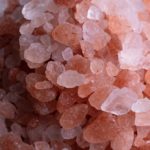Vitamins and minerals – what is the difference?
While shopping for supplements at a drug store, you might have noticed the abundance of vitamins and minerals. These two often go hand in hand that you hardly ever stop to ask about the difference between them. Both vitamins and minerals are compounds that help to optimize body functions, however, there are many factors that differentiate from them.
Vitamins
Vitamin is a term introduced first by Casimir Funk, a Polish biochemist, in 1912. Vitamins are complex organic compounds derived either from plants or animals. Vitamins can be divided into two major groups depending on their solubility – there are water or fat-soluble vitamins.
Water-soluble vitamins require water for proper absorption in the body and are easily eliminated through urination. This is the reason why the regular intake is required because deficiencies can occur fast.
Here are some examples of water-soluble vitamins:
- Vitamin C, also known as Ascorbic acid, is an antioxidant that helps to boost the immune system, as well as promote rapid wound healing. It also plays an important role in iron absorption.
- Vitamin B – this name commonly refers to Vitamin B complex because it is composed of a group of vitamins with similar chemical structures. These are B1, B6, B12, Niacin, Panthothenic acid, Folic acid, and Biotin. A healthy diet should normally be enough to provide a sufficient amount of vitamins from group B, however, drinking alcohol frequently may lead to deficiencies.
As implied by its classification, fat-soluble vitamins are absorbed and stored in body fat. Due to the fact that these vitamins are stored longer than water-soluble ones, you should limit intake as an overdose may easily occur. Overdose of vitamins is called Hypervitaminosis. Deficiencies take more time to develop and oftentimes happen to people who have low body fat or to those who have problems with fat digestion.
The following vitamins are fat-soluble:
- Vitamin A is also known as Retinol. This vitamin is a fat-soluble compound necessary for proper vision, bone development, and cells reproduction.
- Vitamin D is often called Calciferol. This vitamin is usually formed by irradiation of cholesterol by sunlight. It is vital for the formation of normal bones and teeth and also for calcium and phosphorus absorption.
- Vitamin E is a vitamin commonly used by those who want to improve their skin condition. It is also called Tocopherol, an antioxidant that helps in sustaining tissue integrity. Hypervitaminosis from Tocopherol is not a common occurrence because this vitamin can be stored to a large extent in the body.
- Vitamin K – This vitamin also refers to Phylloquinone or Menadione. It is synthesized by normal intestinal bacteria and stored in the liver in small amounts. It plays a huge role in the coagulation of blood.
Minerals
Minerals are inorganic compounds or elements in their simple inorganic form. They can be found in soil and are absorbed by plants. Their structure is much simpler compared to vitamins. While the body necessitates all forms of vitamins, this is not the case with minerals. Our body usually requires only several minerals, not all of them. Minerals can either be macro-nutrient or micro-nutrient.
Minerals are stored in different parts or organs of our body, it means that signs of deficiency or excess will also greatly vary. It is crucial to know that mineral deficiencies are more serious than vitamin deficiencies, thus should be referred to a physician.
Macro Minerals are minerals that a body requires in large amounts – they are essential at 100 mg or more per day. Experts have identified 7 macro minerals, each performing several functions in the body. These are:
- Calcium (Ca)
- Magnesium (Mg)
- Sodium (Na)
- Potassium (K)
- Phosphorus (P)
- Sulfur (S)
- Chlorine (Cl)
Micro Minerals are minerals needed only in small amounts – less than 100 mg per day. They are also known as Trace Minerals. Experts are tasked to prescribe the number of minerals needed because high doses are considered to be toxic for a body. Micro Minerals include:
- Iron (Fe)
- Copper (Cu)
- Iodine (I)
- Manganese (Mn)
- Zinc (Zn)
- Molybdenum (Mo)
- Selenium (Se)
- Fluorine (F)
- Chromium (Cr)
- Vanadium (V)
Sources of vitamins and minerals
Vitamins and Minerals can be found in a large assortment of fruits and vegetables. They are also abundant in meat, shellfish, and animal products – like milk for example. Before taking nutritional supplements, keep in mind that vitamins and minerals should be provided by a healthy diet. The key is to regularly eat meals rich in green leafy vegetables, fruits, protein, and carbohydrates.




























